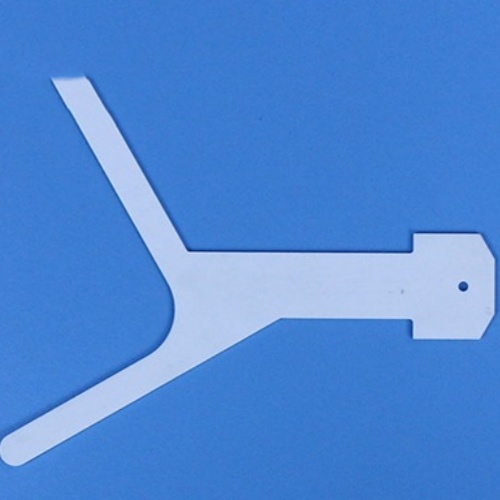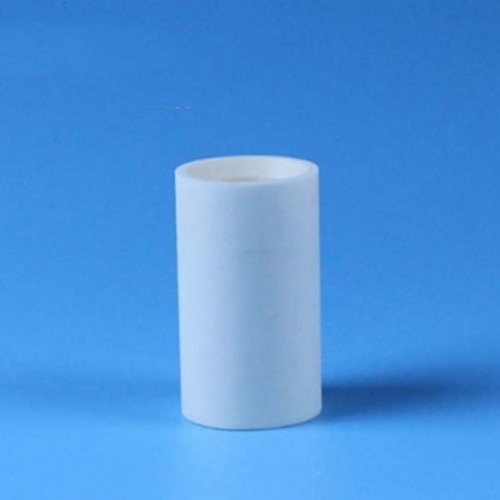What are the applications of aluminum nitride ceramics in the field of automotive electronics
Aluminum nitride (AlN) ceramics, as a high-performance non oxide ceramic material, have been widely used in the field of automotive electronics due to their excellent physical and chemical properties.

- IGBT module heat dissipation substrate
In new energy vehicles, IGBT modules are the core components of high-voltage and high-power electronic devices, which generate a large amount of heat during operation. Aluminum nitride ceramic substrate has high thermal conductivity (thermal conductivity can reach 170-260 W/m · K), which can effectively conduct the heat generated by the chip to the heat dissipation substrate, thereby reducing the operating temperature of the module. In addition, its thermal expansion coefficient is similar to that of silicon chips, which will not cause stress damage to the chips, and it also has good mechanical properties and corrosion resistance. These characteristics make aluminum nitride ceramic substrates the preferred material for IGBT module packaging. - LED headlight heat dissipation substrate
Car LED headlights generate high temperatures during operation, and poor heat dissipation can accelerate brightness degradation. Aluminum nitride ceramic substrates have high thermal conductivity, excellent insulation properties, and a thermal expansion coefficient that is more compatible with LED bulbs, which can effectively solve the heat dissipation problem of LED headlights. In addition, aluminum nitride ceramics can also be used as heat dissipation substrates for other LED lighting systems such as car taillights and daytime running lights, ensuring the stability and service life of the lamps. - Battery Management System (BMS) Thermal Management
The Battery Management System (BMS) is a core component in electric vehicle batteries, responsible for monitoring the battery status and ensuring its safe operation. The high thermal conductivity and electrical insulation of aluminum nitride ceramics make it an ideal BMS heat dissipation material. By applying aluminum nitride ceramics to the thermal management device of BMS, the operating temperature of BMS can be effectively reduced, ensuring its precise operation while avoiding battery failure caused by high temperature. - Sensor applications
Aluminum nitride ceramics have good electrical insulation, high thermal conductivity, and high temperature stability, making them suitable for manufacturing various automotive sensors such as temperature sensors, pressure sensors, and oxygen sensors. These sensors need to work stably in environments with high temperature, high humidity, and high vibration. The excellent performance of aluminum nitride ceramics can meet these requirements, ensuring the reliability and accuracy of the sensors. - Automotive electronic components
Aluminum nitride ceramics can be used to manufacture automotive electronic components such as circuit boards, capacitors, and resistors. Its high insulation and thermal stability can improve the performance and reliability of electronic components, while reducing faults caused by high temperature or high voltage. In addition, the lightweight characteristics of aluminum nitride ceramics help to reduce the overall weight of automobiles, improve fuel economy and power performance. - Charging equipment
Aluminum nitride ceramics can be used to manufacture connectors and plugs in the charging equipment of electric vehicles. These components need to have high wear resistance and high temperature resistance to meet the requirements of electric vehicle charging. The high hardness and wear resistance of aluminum nitride ceramics make it an ideal material choice. - Integration of power battery module
In the power battery module of electric vehicles, aluminum nitride ceramic can be used as a material for the thermal conduction plate or radiator between modules. Its high thermal conductivity can form efficient heat dissipation channels within the battery system, further improving the overall thermal management capability of the battery system. In addition, the lightweight characteristics of aluminum nitride ceramics help reduce the volume and weight of battery modules. - Fuel cell bipolar plate coating
Aluminum nitride ceramics can be used as coatings for fuel cell bipolar plates in hydrogen powered vehicles. Its resistance to hydrogen embrittlement and good electrical insulation can adapt to the acidic environment of fuel cells, improving their performance and lifespan.

Aluminum nitride ceramics have broad application prospects in the field of automotive electronics due to their high thermal conductivity, electrical insulation, high temperature stability, and lightweight characteristics. From IGBT module heat dissipation substrates to LED headlight heat dissipation substrates, from battery management systems to various sensors, aluminum nitride ceramics provide strong guarantees for the efficient operation and reliability of automotive electronic systems.
PREVIOUS:Application of Aluminum Nitride Ceramics in Sensors
NEXT:Efficient heat dissipation application of aluminum nitride ceramics in LED lighting
CATEGORIES
LATEST NEWS
- Zirconia Ceramic Rod Custom...
- High-temperature resistance...
- What is the wear resistance...
- What is the hardness of cer...
- Aluminum oxide ceramic cust...
- What are the main aspects o...
- What are the mechanical pro...
- Thermal properties of zirco...
- What properties should be c...
- What are the mechanical pro...
